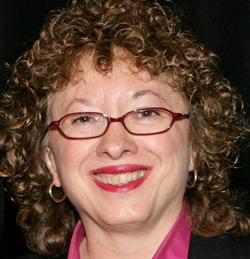Short of sitting in a chair all day, there is no reliable way to prevent such falls.
Fortunately, Drew Lakatos and his co-founder Dr. Robert Buckman are on the brink of changing all that.
They have come up with a wearable device that can sense when a person is about to fall and deploy an airbag, similar to the one in your car, to cushion the hips and prevent a fracture. It then notifies a family member or caregiver. Best of all, the device is a comfortable garment that can be worn while going about daily activities.
After years of painstaking research, they have a prototype that works and are seeking investment to bring it to market, hopefully in the next year. If all goes as planned, the device will become the standard in long-term-care (LTC) facilities; elderly people can also use the device to continue to live independently in their own homes.
What was the inspiration behind ActiveProtective?
Dr. Buckman is a former lieutenant colonel combat surgeon (in the medical corps of the U.S. Army Reserve during Operation Desert Storm); he has held the position of head of trauma at the Temple University Trauma Center and at St. Mary Medical Center in Langhorne. With over 15 patents and over 100 publications in multiple fields of medicine, he has always looked for new ways solve large medical issues.
While running those trauma centers, he noticed the increasing volume of elderly people who had fallen and broken a hip. They were screaming in pain, and he started wondering how to help this patient population avoid this type of injury. That led him to ask if we could identify people who are at very high risk. That was the first research: finding the statistics on people at risk.
The second question was, what concepts can you use to protect them? There needs to be protection that doesn’t interfere with their day. So the concept of “active protection” was born.
I’m originally from the Lehigh Valley, and I studied electrical engineering at Villanova University. I worked for Bell Labs, and then my first start-up was a consumer electronic product for home office use. The second was a semiconductor software company. My passion has always been using technology to help people.
My wife is a Physician Assistant (PA); she introduced me to Dr. Buckman in 2005. He taught her trauma surgery, and he described to her what he wanted to do [for preventing falls]. She said, “You have to talk to my husband.”
He shared his concept with me, and I was an advisor to him over the next couple of years while we were waiting for sensors and inflators to become cost-effective. He filed patents for the device. After five or six years, the patents were issued, and sensors got ubiquitous and cheap, (due to smart phones), so we started putting together a business plan. I became CEO in 2012, we began fundraising in 2013, and we closed the seed round in January 2014.
Explain how your device works.
We had to look at biomechanical sequences and activities of daily living. We put together libraries of normal human motions. Then we could determine when someone has moved outside of that motion.
In order to determine a fall prior to impact, you need to do it with enough time to prevent the injury. So we had to determine when a person has departed from normal motion — at that point the device goes on hyper-alert, and then it deploys the airbag, which inflates in about 60 milliseconds. It protects the at-risk anatomy, the femoral head and the iliac crest of the hip.
Where are you in the development process?
We have developed the device that detects a human fall; the R&D of the electronics are complete. We have had 100 people wear the electronics (without the airbag) to do long-term data capture on ADLs [activities of daily living]. We have simulated 500 falls of all varieties. Using that data set, we can determine the accuracy of the algorithm.
Using the airbags, we have done impact-attenuation tests. We have been able to reproduce the maximum forces that can be generated from a person falling, and we can see how much of that force is attenuated with the airbags.
We did that testing at the Veterans Administration Gait Mobility Lab in Providence, R.I. We were able to reduce impact force by 90 percent, which puts us well below the hip-fracture threshold. If you’re wearing this device, it’s likely that you’ll never break your hip.
We have a fully working prototype, which was on stage at the TEDMED talk I gave last month.
We’re launching a Series A raise, and then we need to turn the prototype into a consumer-ready device. We have to complete the industrial design and get UL certification for that (the components of the device are already UL-approved). That will take about six to nine months.
Then we’ll be ready for trial with an aligned LTC facility we’ve selected, which will put the devices on their patients. With that, we can generate the hip-fracture reduction rates, and at that point we’ll go to market.
How has your company grown so far?
At first, we didn’t have a building. We used lab facilities in Maryland, where Dr. Buckman has another company he started, Operative Experience, which makes high-fidelity human simulators to teach combat casualty surgery. We used the simulators for some of our testing.
The 3-D motion algorithm development was done in Herndon, Va., by engineers who do this kind of process for the military.
When we got funded in our seed round, we moved into office space in downtown Allentown, across from the new arena, for our management and operations.
Dr. Buckman and I are full-time; our algorithm development was done by two engineers on a contract basis, and we contracted the team from Boston Device Development for our prototype development. So our virtual team is eight people.
What has been the biggest challenge so far?
From a technical standpoint, it’s determining a fall prior to impact. It took years to figure that out.
From a business perspective, investors are fearful of the risk of regulation and the risk of this being a brand-new market. So it takes education, explaining that there is no other way to protect a very complex joint. That has taken some time. In general, medical devices have been an under-invested sector by venture capital in the last five years. It took longer to get financed than expected.
What’s next for ActiveProtective?
The plan is to have the cold-gas inflators made in Michigan, where such companies are located; the electronics and soft goods will be done by larger companies as well. All the sales, marketing and operations — as well as the final integration, shipping and distribution — will be done here in the Lehigh Valley.
There are twelve million people in LTC facilities in the U.S. 300,000 people each year fracture a hip. If they don’t die (25 percent do), they live the rest of their lives with a 15 percent chance of breaking another hip. Our projections for users are in the hundreds of thousands; probably there will be more.
The TEDMED opportunity to evangelize the concept was important for us. There were 187,000 people streaming [the content] across 147 countries. Now we have to raise at least $5 million to build this to commercialization. Since the TEDMED talk, there’s been tremendous interest from LTC facilities, insurance companies, some of the large medical device manufacturers for rehabilitation and orthopedics, and from inflator companies, who want to discuss investment in our company.
It’s exciting, and I’m breathless.
I look at my 97-year-old grandfather, and ask, “Would he wear this device if it allowed him to live at home in the house he built with his own hands after World War II?”
The answer is definitely yes.
Writer: Susan L. Pena

http://www.activeprotect.com/
822 Hamilton St. Suite 208 Allentown, PA 18101


